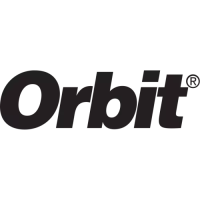Orbit Reader 20 – User guide Version 1.8
Orbit Research Confidential and Proprietary Information 6
In Stand-Alone mode, the Orbit Reader 20 displays the contents of files stored on
an SD card. Here, there are no translations or interpretations involved. You
prepare the files on your computer, and then store them on the SD card. For
example, if you want to read in Unified English Braille (UEB), prepare the UEB
transcribed title on your computer and then store it on the card.
2.2 Remote Mode
Connect the device to a computer or portable device with a screen reader and
then do one of the following:
• Read commercially available titles on Kindle™, Adobe® Digital Editions, or
iBooks® application programs.
• Employ any accessible technology for browsing, utilities, and education.
The screen reader translates text into braille code of choice.
3 Transcribed Braille
There are multiple sources for files transcribed into high quality braille. Below are
some examples:
• National Library Service (NLS) provides professionally transcribed, formatted
files through the Web Braille project.
• American Printing House for the Blind (APH) transcribes textbooks for K-12
students.
• National Braille Press (NBP) produces braille books, textbooks, tests, and
information for adults and children.
• Louis Database lists titles produced by over 160 organizations.
4 Automatic Translation
In addition to professionally transcribed titles, you may also use dynamic
translation to obtain braille.
Automatically translated braille may be appropriate for some forms of reading.
• NFB-NEWSLINE® is a free audio information service providing downloadable
Braille files of up-to-the-minute content from over 400 national,
international, and state newspapers.
• Bookshare® dynamically generates braille formatted files from the titles in its
library.

